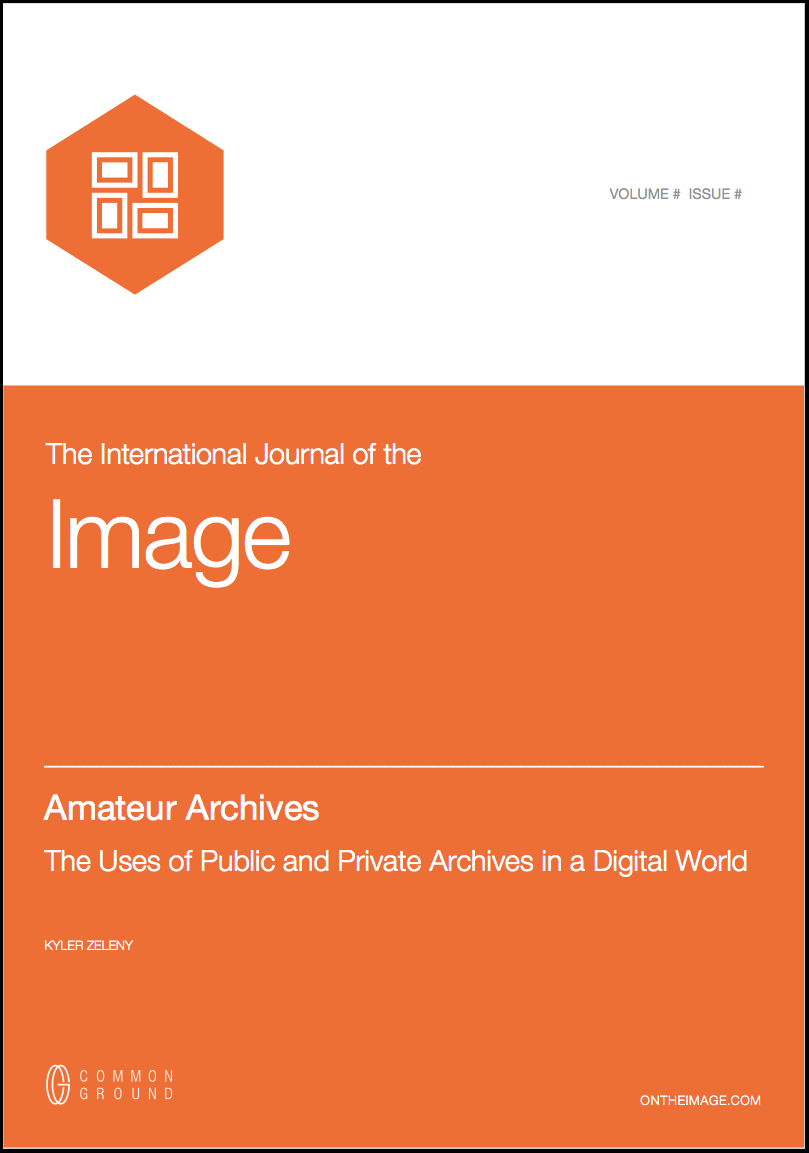Amateur Archives: The Uses of Public and Private Archives in a Digital World
“Amateur Archives: The Uses of Public and Private Archives in a Digital World” in the International Journal of the Image.
(Abstract…)
Over the past decade there has been a rise in the intensity and relevance of online archival sites-both those that showcase archival/found imagery as well as those that collect, publish and then sell reproductions of archived documents themselves. These websites, the new media of an old form, have been produced either by institutions/organization, disperse online communities or single acting individuals. Historically, visual archives have been held in both public and private trust with varying degrees of public access. A recent trend is the increased diversion of archives from institutions to private collections. Limited storage space, storage costs, decreases in government funding to cultural and heritage programs and the costs associated with acquiring new archival material have aided this shift. As a result online communities and individual actors are becoming active participants in how and under what circumstances we access visual archival footage. Using current case studies, the paper will focus on the functional and symbolic changes that occur when archives end up in the hands of amateur archivists. Key theories from Marshall McLuhan and Robert Logan on the rise of media communication technology and the writings of Lev Manovich on New Media will be used to theoretically frame this discussion. The second half of the paper will look to explain how we conceptualize and interact with archives both as physical documents and as a form of online culture and what this means for both archive collections held in public trust and by individuals. The paper will conclude with an exploration of what amateurs are archiving, how they are archiving and how this is operationally different from institutions. The case studies of Kyler Zeleny’s “Found Polaroids,” Arianna Arcara and Luca Santese’s “Found Photos in Detroit,” and Erik Kessel’s series “In Almost Every Picture” will help illustrate and provide grounded scenarios of how individuals collect and reappropriate archives for publication and digital platforms. The work of Harry Jacobs, Vivian Maier and Jamie Livingston will facilitate the questioning of ethics, ownership and curation. The Black Star Picture Collection and Polanoid will also be used as contrasting examples of how archives are referenced by institutions and by individuals online.
(Excerpt…)
“This leads to the question: who is an amateur archivist and what is their modus operandi for collecting? Amateur archivists act as historical scavengers, they rummage “through boxes of stuff at flea markets, scroll through the latest offerings on EBay, search through the exhibitions at museums, and inquire at second hand book and antique stores” (Cox 2008, pg. 35). They collect out of interest, scour for hidden gems, looking for that illusive image that might provide some measure of excitement. In this sense, the amateur archivist operates as the image equivalent of Susan Solnit’s rag-picker, the individual who looks for value in locations thought to be barren (1977, pg. 78). On the viewing of images, Victor Buchli writes, “what in conventional western terms might be thought of as waste is actually a resource to be cared for and nurtured” (2010, pg. 111). This sentiment demonstrates the democratic nature of the amateur archivist. Unburdened by institutional frameworks, the amateur assigns value and determines what is and is not visual waste.”
To get on board with Amateur Archives click here or shoot me an email.

